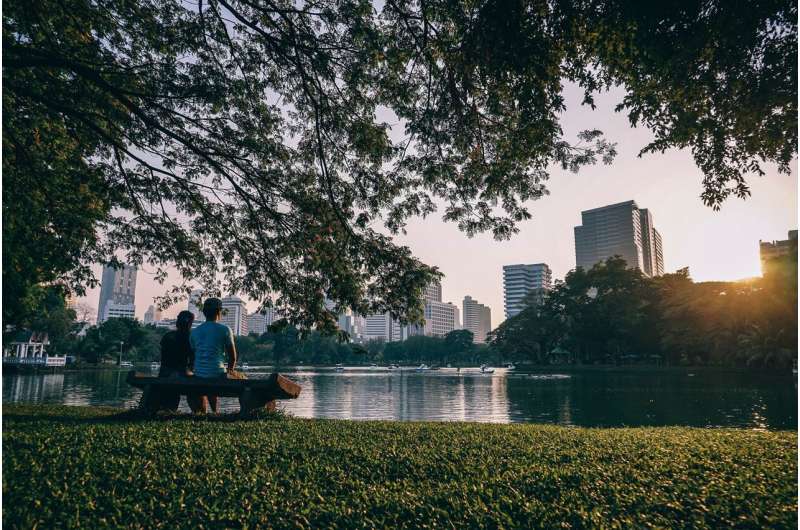New study evaluates 'urban-wildland juxtapositions' of 36 US cities

For some, the great outdoors is nothing but a short walk away, while for others escaping the city is an odyssey in itself. While jogging in the wildlands surrounding Salt Lake City, Professor Jeff Rose wondered if there was a way to measure the border between undeveloped land and urban areas.
The resulting paper, co-authored with his colleagues at the University of Utah, U.S., is published in the journal Geography and Sustainability. It used different metrics to measure the "urban-wildland juxtaposition" of 36 US cities.
"In Salt Lake, it's a very striking contrast—you can be on a trail through miles of wild meadows and woodlands with the city humming below you just minutes away," says co-author Professor Sarah Jack Hinners. "The idea from the beginning was to create a metric that could quantitatively capture that experience."
The authors measured urban factors by looking at a city's population size and population density, plus its airport capacity and transit service as measures of infrastructure concentration. Wildland was measured as the less-developed public land within 50 miles (80 km) of an urban area that could be reached by the public for recreation.
Using government figures, the authors developed three metrics: the "urbanicity" of a city (U), the quantity of nearby, unbuilt "wildland" (W) and the "juxtaposition" between them (UWJ). They then calculated these metrics for 36 US cities, ranging from large metropolises, such as Dallas–Fort Worth–Arlington in Texas to regional hubs, such as Shreveport in Louisiana.
The final UWJ scores ranged from nearly zero (Lubbock, Texas) to 0.106 (Phoenix-Mesa). "These values make sense when considering what city would reach a 'perfect' score of one," says Hinners. "We had to leave room in the space between zero and one for a ridiculously urban place (think Blade Runner or Star Wars' Coruscant) completely surrounded by 100% wildland (think Avatar)," she adds. This helped the researchers understand why the city scores were so low, since anything scoring beyond 0.1 would have very rare, dramatic urban interfaces.
Cities with high or low UWJ scores also fit in with some of the researchers' hypotheses about the populations of these cities. For example, they found that high U and UWJ metrics moderately correlated to a higher proportion of the "creative class," highly-educated, mobile workers in professional and technological fields who want to live in places with a lot of cultural and social amenities. Likewise a high W score was moderately correlated to lower obesity and diabetes rates.
"We hypothesized that a place with a strong urban-wildland juxtaposition would be attractive to people who are young, educated and mobile," says Hinners. "These are also people who drive growing economies."
Hinners would like to see others use this new metric to compare more cities and conduct more complex analyses. It could also help researchers and city planners develop a recipe for success for a twenty-first century city.
"I think it can serve to point out the value of preserving and highlighting what ecological landscapes still exist, and even restoring them where feasible," she says.
More information: Sarah J. Hinners et al, Geographically evaluating urban-wildland juxtapositions across 36 urban areas in the United States, Geography and Sustainability (2022). DOI: 10.1016/j.geosus.2022.05.004
Provided by Springer




















